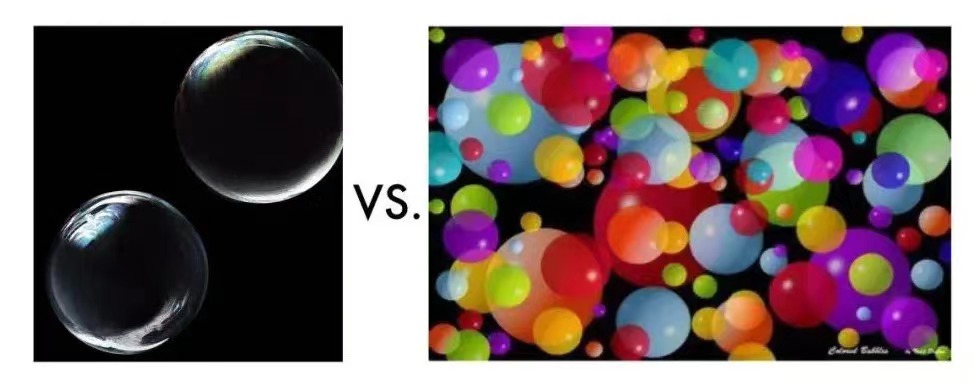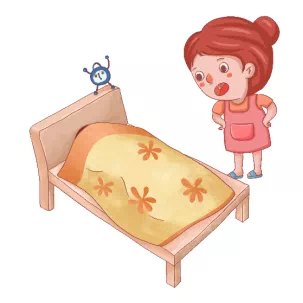本期作者:Psychology心理探寻

A schema is a cognitive structure that serves as a framework for one’s knowledge about people, places, objects, and events. Schemas help people organize their knowledge of the world and understand new information. While these mental shortcuts are useful in helping us make sense of the large amount of information we encounter on a daily basis, they can also narrow our thinking and result in stereotypes.
图式,是一个人对人、地点、物体和事件形成的认知构架(知识单元、基模)。图式可以帮助人们整理对世界的认知、帮助人们理解新信息。尽管这些思维捷径对了解我们日常生活中常遇到的大量信息很有帮助,但它们也会限制我们的思维,导致固化偏见的形成。
Key Takeaways: Schema
- A schema is a mental representation that enables us to organize our knowledge into categories.
图式是一种让人们将知识信息归类的思维模型。
- Our schemas help us simplify our interactions with the world. They are mental shortcuts that can both help us and hurt us.
这些图式可以简化人类与世界的互动,如同思维捷径,但有利也有弊。
- We use our schemas to learn and think more quickly. However, some of our schemas may also be stereotypes that cause us to misinterpret or incorrectly recall information.
我们通过图式可以更快地学习和思考,但一些图式可能会是固化成见,导致我们错误解读或错误回忆信息。
- There are many types of schemas, including object, person, social, event, role, and self schemas.
有很多类型的图式,包括物体、人、社交、事件、角色、自我等。
- Schemas are modified as we gain more information. This process can occur through assimilation or accommodation.
随着新知识的获取,图式会被更改,这一过程通过“同化”和“调整”实现。
Schema: Definition and Origins
图式:定义与起源
The term schema was first introduced in 1923 by developmental psychologist Jean Piaget. Piaget proposed a stage theory of cognitive development that utilized oschemas as one of its key components. Piaget defined schemas as basic units of knowledge that related to all aspects of the world. He suggested that different schemas are mentally applied in appropriate situations to help people both comprehend and interpret information. To Piaget, cognitive development hinges on an individual acquiring more schemas and increasing the nuance and complexity of existing schemas.
这一术语于1923年由发展心理学家让·皮亚杰提出。他提出了认知发展阶段理论,图式这一概念是这一理论中的关键概念之一。皮亚杰将图式定义为:与世界各方面相关所有知识的最基本单元。他认为,人们利用不同的思维图式理解并解读信息。对皮亚杰而言,认知发展的关键在于获取更多新图式,并增加现有图式的细微区别与复杂性。
The concept of schema was later described by psychologist Frederic Bartlett in 1932. Bartlett conducted experiments that tested how schemas factored into people’s memory of events. He said that people organize concepts into mental constructs he dubbed schemas. He suggested that schemas help people process and remember information. So when an individual is confronted with information that fits their existing schema, they will interpret it based on that cognitive framework. However, information that doesn’t fit into an existing schema will be forgotten.
后来,心理学家Frederic Barlett也对这一概念做出了说明。他开展了一系列实验,这些实验测试了图式对记忆的作用。他认为,人们将各种概念整理为思维框架,他将这些框架称之为图式。他还提出,图式可以帮助人们处理和记忆信息。因此,当一个人面对符合他们现有图式的信息时,他们会根据这一既有认知框架来解读这一信息。但不符合一个现有图式的信息会被忘记。
Examples of Schemas
图式示例
For example, when a child is young, they may develop a schema for a dog. They know a dog walks on four legs, is hairy, and has a tail. When the child goes to the zoo for the first time and sees a tiger, they may initially think the tiger is a dog as well. From the child’s perspective, the tiger fits their schema for a dog.
例如,当孩子年幼时,他们可能对狗形成了一个图式,他们知道狗四条腿走路,毛茸茸,有一个尾巴。当这个孩子第一次去动物园看到老虎时,他一开始可能会认为这只老虎是狗。从孩子的视角来看,老虎符合他们对狗所形成的图式。
The child’s parents may explain that this is a tiger, a wild animal. It is not a dog because it doesn’t bark, it doesn’t live in people's houses, and it hunts for its food. After learning the differences between a tiger and a dog, the child will modify their existing dog schema and create a new tiger schema.
孩子的父母可能会解释说这是老虎,一只野生动物。不是狗,因为它不汪汪叫,不住在人类的家里,它会捕猎食物。在了解了老虎和狗之间的区别后,这个孩子就会更改他们对狗的既有图式,创造一个关于老虎的新的图式。
As the child grows older and learns more about animals, they will develop more animal schemas. At the same time, their existing schemas for animals like dogs, birds, and cats will be modified to accommodate any new information they learn about animals. This is a process that continues into adulthood for all kinds of knowledge.
随着孩子年龄渐长,认识更多动物,他们会形成更多的动物图式。同时,他们之前对一些动物,如狗、鸟和猫等所形成的图式也随着他们获取更多关于动物的新信息而被相应更改。这一过程会一直延续至成年,发生于各种知识类型中。
Types of Schemas
图式类型
There are many kinds of schemas that assist us in understanding the world around us, the people we interact with, and even ourselves. Types of schemas include:
有很多种类的图式帮助我们了解周围世界、周围的人,甚至我们自己。图式类型包括:
Object schemas
物体图式:
which help us understand and interpret inanimate objects, including what different objects are and how they work. For example, we have a schema for what a door is and how to use it. Our door schema may also include subcategories like sliding doors, screen doors, and revolving doors.
帮助我们了解无生命物体,包括各种不同物体是什么以及如何运作。例如,我们对门是什么以及如何使用有着一个图式。我们关于门的图式可能还包括一些子分类,如移门、纱门、旋转门等。
Person schemas
人类图式:
which are created to help us understand specific people. For instance, one’s schema for their significant other will include the way the individual looks, the way they act, what they like and don’t like, and their personality traits.
帮助我们了解具体的人。比如,一个人对伴侣的图式可能包括对方样貌、行为方式、喜好厌恶、性格特征等。
Social schemas
社会图式:
which help us understand how to behave in different social situations. For example, if an individual plans to see a movie, their movie schema provides them with a general understanding of the type of social situation to expect when they go to the movie theater.
帮助我们了解如何在不同社交情形中做出相应举止。例如,如果一个人想要看电影,他们的电影图式就会让他们知道在他们进入影院后会遇到何种类型的社交情形。
Event schemas
事件图式:
also called scripts, which encompass the sequence of actions and behaviors one expects during a given event. For example, when an individual goes to see a movie, they anticipate going to the theater, buying their ticket, selecting a seat, silencing their mobile phone, watching the movie, and then exiting the theater.
也被称为剧本,包括了一个人在一个既定事件中预计会发生的一系列行为和活动。比如,当一个人去看电影,他们会知道需要执行以下行为:去影院、买票、选座、手机静音、观影、离场等行为。
Self-schemas
自我图式:
which help us understand ourselves. They focus on what we know about who we are now, who we were in the past, and who we could be in the future.
帮助我们了解自己。它们主要是关于我们对“我们现在是谁、我们过去是谁,我们未来可能会成为怎样的人”的认知。
Role schemas
角色图式:
which encompass our expectations of how a person in a specific social role will behave. For example, we expect a waiter to be warm and welcoming. While not all waiters will act that way, our schema sets our expectations of each waiter we interact with.
包含了我们对“一个人在特定社会角色中应表现出怎样的行为”的预期。例如,我们对服务生的预期是他会礼貌友好。并非所有服务生都会符合这种预期,我们的图式为我们遇到的每一位服务生都设定了预期。
Modification of Schema
图式的修改
As our example of the child changing their dog schema after encountering a tiger illustrates, schemas can be modified. Piaget suggested that we grow intellectually by adjusting our schemas when new information comes from the world around us. Schemas can be adjusted through:
上文提到一个孩子见到老虎就修改了自己关于狗的图式,如此例所示,图式是可以被更改的。皮亚杰认为,当我们从周围世界得到新信息,并相应调整我们的图式时,我们的智力就得到了发展。图式可以通过以下方式调整:
- Assimilation, the process of applying the schemas we already possess to understand something new.
同化:利用既有图式去了解新信息。
- Accommodation, the process of changing an existing schema or creating a new one because new information doesn’t fit the schemas one already has.
调整:因为新信息不符合原有图式,因此更改原有图式或创建新图式。
Impact on Learning and Memory
对学习与记忆的影响
Schemas help us interact with the world efficiently. They help us categorize incoming information so we can learn and think more quickly. As a result, if we encounter new information that fits an existing schema, we can efficiently understand and interpret it with minimal cognitive effort.
图式帮助我们与周围世界高效互动。帮助我们将新信息分类,从而更够更快学习与思考。这样,当我们遇到符合一个既有图式的新信息时,我们就能轻松理解、解读这一新信息。
However, schemas can also impact what we pay attention to and how we interpret new information. New information that fits an existing schema is more likely to attract an individual’s attention. In fact, people will occasionally change or distort new information so it will more comfortably fit into their existing schemas.
但是,图式也可以影响我们的关注侧重点以及我们对新知识的解读角度。那些符合既有图式的新信息更可能吸引一个人的注意力。实际上,人们会偶尔更改或扭曲新信息,目的是让它更符合他们的既有图式。
In addition, our schemas impact what we remember. Scholars William F. Brewer and James C. Treyens demonstrated this in a 1981 study. They individually brought 30 participants into a room and told them that the space was the office of the principal investigator. They waited in the office and after 35 seconds were taken to a different room. There, they were instructed to list everything they remembered about the room they had just been waiting in. Participants’ recall of the room was much better for objects that fit into their schema of an office, but they were less successful at remembering objects that didn’t fit their schema. For example, most participants remembered that the office had a desk and a chair, but only eight recalled the skull or bulletin board in the room. In addition, nine participants claimed that they saw books in the office when in reality there weren’t any there.
另外,我们的图式也影响着我们的记忆。学者 William F. Brewer 和 James C. Treyens 在1981年的一次研究中诠释了这一点。他们分别将30名参与人员带入一个房间,并告诉他们这里是首席调查员的办公室。他们在这里等待了35秒后,被带入另一个不同的房间。在这个新房间中,他们被要求列出关于之前房间内他们记得的所有事物。结果显示,对符合他们的办公室图式的物品,他们有着更强的记忆,但对于不符合他们办公室图式的物品,他们记忆效果则较低。例如,很多参与人员都记得那一间办公室有一张桌子和一把椅子,但只有8位参与者记得房间里的骷髅头或告示板。另外,有9位参与者说他们还记得在那件办公室看到了书籍,但实际上那里并没有。
How Our Schemas Get Us Into Trouble
图式如何让我们陷入困境
The study by Brewer and Trevens demonstrates that we notice and remember things that fit into our schemas but overlook and forget things that don’t. In addition, when we recall a memory that activates a certain schema, we may adjust that memory to better fit that schema.
Brewer 和 Trevens的研究展示,我们会注意到并记住符合我们既有图式的事物,但会忽视并忘记那些不符合我们既有图式的事物。另外,当我们回忆起一段触发特定图式的记忆时,我们可能会调整记忆,以使其更符合该图式。
So while schemas can help us efficiently learn and understand new information, at times they may also derail that process. For instance, schemas can lead to prejudice. Some of our schemas will be stereotypes, generalized ideas about whole groups of people. Whenever we encounter an individual from a certain group that we have a stereotype about, we will expect their behavior to fit into our schema. This can cause us to misinterpret the actions and intentions of others.
因此,尽管图式可以帮助我们高效学习并理解新信息,但有时它们可能也会让这一过程偏离正确轨道。例如,图式会导致偏见的产生。我们的一些图式会是固化成见,即对一整个群体所产生的笼统观点。无论何时当我们遇到来自那一群体中的个体时,我们就会认为该个体的行为会符合我们对该群体所形成的图式。这就可能会导致我们错误解读别人的行为和本意。
For example, we may believe anyone who is elderly is mentally compromised. If we meet an older individual who is sharp and perceptive and engage in an intellectually stimulating conversation with them, that would challenge our stereotype. However, instead of changing our schema, we might simply believe the individual was having a good day. Or we might recall the one time during our conversation that the individual seemed to have trouble remembering a fact and forget about the rest of the discussion when they were able to recall information perfectly. Our dependence on our schemas to simplify our interactions with the world may cause us to maintain incorrect and damaging stereotypes.
例如,我们可能会觉得任何年龄较大的人大脑都会有些退化。如果我们遇到一位思维敏捷、富有观察力的年长者,与其一席话你感觉胜读十年书,那么这一经历就会挑战我们的固化成见。但,我们可能并非去改变我们的图式,而是只是觉得这个人只是那天凑巧发挥超常而已,或者我们可能会回忆起在谈话中这个人有一次似乎很难回想起一个事实,并忘掉了其他讨论内容,尽管当时他们实际上在回忆信息方面毫无问题。我们依赖于图式去简化我们与世界的互动,但这种以来可能会导致我们持有错误和有害的固化成见。

















